To live is to experience.
To experience is to learn.
To learn is to grow.
I have learned much over the past year about ways I can expand my teacher tool kit, but my most recent experience in Kyuquot has shown me an “inner” tool kit – the ways in which I personally relate to new ideas and environments, not grounded in theory but lived experience. My CFE has also challenged me to re-evaluate how and when I can apply my own teacher’s tool kit to new learning contexts – it is not simply a matter of how my students relate to me, but also how I relate to my students. The nature of an awesome learning experience is not necessarily found in a well-planned lesson or structure of a school. The nature of an awesome learning experience is found in relationship building. Relationship is everything. A teacher’s ability to forge healthy relationships with students will determine the ways in which they can assist students to reach personal academic success. But relationships are never easy and at the core of any healthy relationship is trust. My personal interactions with the students of K.E.S.S. these past few weeks have enabled me to build the foundation of a relationship based on trust, though I feel more time would be needed for trust to grow and the relationship to flourish so that respectful learning environments can be supported. Regarding student misbehaviour, the new approach at the school has been to surround misbehaving students with adult members of the school community. By promoting healthy relationships based on mutual trust, as opposed to an obedience to authority, learning professionals can build bridges to colleagues, disciplines, students, parents, administrators, and the larger community. Most First Nations across our country survived the culture of colonialism in the past, but this culture has not gone away and the reverberations of this generational injustice is still felt in communities and classrooms. One key question then remains: How are we, as learning professionals, to establish relationships based on trust with our students? Over the past weeks, I have been thinking about this question and would like to explore two alternatives: Social and Emotional Learning and Restorative Justice.
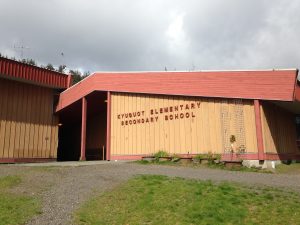 Social and Emotional Learning (SEL) is an approach to teaching that allows students to integrate their skills, attitudes, and behaviours to deal ethically with tasks and challenges. It promotes intrapersonal, interpersonal, and cognitive competence. Now, there are five pillars to SEL: Self-Awareness, self-management, social awareness, relationship skills, and responsible decision-making. Many of the students at K.E.S.S. struggle daily with self-efficacy, self-regulation, perspective-taking, reflecting, and communicating – all of which are essential 21st century skills and values. It seems reasonable to me that a multi-grade classroom with students of various abilities would require an alternative approach to instruction, or a move away from a traditional, industrial-era mindset. Most exciting for me, is SEL’s capacity to engage whole communities, motivating parents from interest in their child’s education and towards participation.
Social and Emotional Learning (SEL) is an approach to teaching that allows students to integrate their skills, attitudes, and behaviours to deal ethically with tasks and challenges. It promotes intrapersonal, interpersonal, and cognitive competence. Now, there are five pillars to SEL: Self-Awareness, self-management, social awareness, relationship skills, and responsible decision-making. Many of the students at K.E.S.S. struggle daily with self-efficacy, self-regulation, perspective-taking, reflecting, and communicating – all of which are essential 21st century skills and values. It seems reasonable to me that a multi-grade classroom with students of various abilities would require an alternative approach to instruction, or a move away from a traditional, industrial-era mindset. Most exciting for me, is SEL’s capacity to engage whole communities, motivating parents from interest in their child’s education and towards participation.
Restorative Justice distinguishes itself from traditional criminal justice by adopting an alternative approach to conflict resolution. This alternative approach in based on providing individuals in conflict the opportunity to voice their concerns and decide together what should be done to repair the harm. In an educational setting, misbehaviour hurts, but the act and process of coming together, voicing concerns, and collectively deciding what must be done to make amends, will heal. It emphasizes understanding why relationships work, as opposed to how relationships work. Restorative justice, then, represents a validation of values. In an alternative education setting, particularly the setting around K.E.S.S., I truly feel that disciplinary practices rooted in restorative justice would allow for relationships based on trust to flourish.
Being in a remote community of a rural school district has also taught me to challenge my 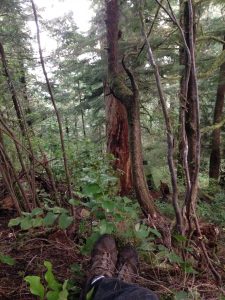 views on the pedagogical implications of promoting the classroom as a space for learning. Out here, there is learning in the soil, trees, rocks, and water – an untapped, renewable wellspring of knowledge. For example, junior and senior students had the excellent opportunity to go whitewater rafting on the Nimpkish River. When they returned from the excursion, they were clearly invigorated by the experience, but I felt as though a learning opportunity might have been lost in not following the activity up with a reflective exercise on what they learned, though I know that it will remain an experience they share and cherish. To me, it is not only a question of whether or not I know what they learned, but also whether or not they know what they learned.
views on the pedagogical implications of promoting the classroom as a space for learning. Out here, there is learning in the soil, trees, rocks, and water – an untapped, renewable wellspring of knowledge. For example, junior and senior students had the excellent opportunity to go whitewater rafting on the Nimpkish River. When they returned from the excursion, they were clearly invigorated by the experience, but I felt as though a learning opportunity might have been lost in not following the activity up with a reflective exercise on what they learned, though I know that it will remain an experience they share and cherish. To me, it is not only a question of whether or not I know what they learned, but also whether or not they know what they learned.
My time in Kyuquot taught me about spontaneity. This bit of wisdom is often passed on from generation to generation, but to truly thrive in a rural district on the west coast of Vancouver Island, this spirit must be embodied. Islanders often joke about how Vancouverites complain about the mildest shift in weather. As a North Islander myself, I thought that I understood unpredictable weather, but Kyuquot taught me that spontaneity is a key ingredient of flourishing in this isolated corner of the world. It is often wet and cold for most of the year, so when the sun shines and opportunity knocks, one must be prepared to go on an impromptu fishing trip, kayaking adventure, or wilderness trek. My personality thrives on structure and predictability and this made fitting in with the local community a challenging and rewarding experience. It also allowed me to push my comfort levels and re-evaluate how I define adaptability. Spontaneity, as we know, is also important in pedagogy, as educators work hard every day to ignite the spark of creativity and imagination in students of all ages. So, once again, the physical environment of Kyuquot taught me how to be a better reflective practitioner.
 In true Islander fashion, I received a maritime send-off aboard the MV Uchuck III bound for Gold River. The Uchuck is a freight boat that doubles as a passenger boat for tourists and kayak enthusiasts. Boarding time was 5:30 in the morning and my colleagues ferried me across the bay to Walter’s Island where the boat was docked. The slow journey provided me with a unique opportunity to reflect on the history and appreciate the beauty of Vancouver Island’s west coast. I am immensely appreciative of my time in Kyuquot for the relationships I have made, experiences I have had, and the lessons I have learned. No matter where teaching takes me, the islets, forests, and mountains of Kyuquot Sound will remind me of the diverse experiences I have shared with the people of this place, as well as the primacy of relationship building in a quality 21st century education.
In true Islander fashion, I received a maritime send-off aboard the MV Uchuck III bound for Gold River. The Uchuck is a freight boat that doubles as a passenger boat for tourists and kayak enthusiasts. Boarding time was 5:30 in the morning and my colleagues ferried me across the bay to Walter’s Island where the boat was docked. The slow journey provided me with a unique opportunity to reflect on the history and appreciate the beauty of Vancouver Island’s west coast. I am immensely appreciative of my time in Kyuquot for the relationships I have made, experiences I have had, and the lessons I have learned. No matter where teaching takes me, the islets, forests, and mountains of Kyuquot Sound will remind me of the diverse experiences I have shared with the people of this place, as well as the primacy of relationship building in a quality 21st century education.
Until next time,
Alex M.
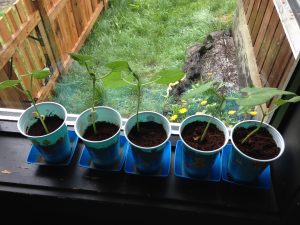 intermediate, junior, and senior. This structure is due to the small student population, which demands the organization of students into single classes of multiple grades. As suspected, this creates significant challenges to teachers in their planning and instruction. But I was curious as to how the local preschool/kindergarten approached instruction. After receiving the consent of my CFE contact, I spent Wednesday assisting the preschool and kindergarten teachers at the Houpsitas Preschool and Kindergarten. H.P.K. is owned and managed by the Nation, whereas K.E.S.S., rests on a sliver of Crown land. I myself had not been in a preschool since I was four years old, so it was both informative and a treat to experience the young ones’ enthusiasm for learning, as well as the teachers’ pedagogical approach to early years education. I spoke with the preschool teacher – a young man – about the school’s approach to learning and he informed me that this was their first year of running the school and they were continuing the routines established by the previous educators that worked there. But he also told me that changes were probable in the following school year, which left me feeling optimistic that rural school districts were receiving new teachers with a great enthusiasm to incorporate the new curriculum into their praxis. My day at Houpsitas was spent singing, dancing, playing language and literacy games, and learning about the life cycle of bean plants. I was told by an instructor during my first term of the UBC teacher education program that junior and senior secondary students are forgetting how to play, because their teachers are forgetting how to play. Spending a day at Houpsitas reminded me of the importance of embedding play into how I learn and how I expect my students to learn.
intermediate, junior, and senior. This structure is due to the small student population, which demands the organization of students into single classes of multiple grades. As suspected, this creates significant challenges to teachers in their planning and instruction. But I was curious as to how the local preschool/kindergarten approached instruction. After receiving the consent of my CFE contact, I spent Wednesday assisting the preschool and kindergarten teachers at the Houpsitas Preschool and Kindergarten. H.P.K. is owned and managed by the Nation, whereas K.E.S.S., rests on a sliver of Crown land. I myself had not been in a preschool since I was four years old, so it was both informative and a treat to experience the young ones’ enthusiasm for learning, as well as the teachers’ pedagogical approach to early years education. I spoke with the preschool teacher – a young man – about the school’s approach to learning and he informed me that this was their first year of running the school and they were continuing the routines established by the previous educators that worked there. But he also told me that changes were probable in the following school year, which left me feeling optimistic that rural school districts were receiving new teachers with a great enthusiasm to incorporate the new curriculum into their praxis. My day at Houpsitas was spent singing, dancing, playing language and literacy games, and learning about the life cycle of bean plants. I was told by an instructor during my first term of the UBC teacher education program that junior and senior secondary students are forgetting how to play, because their teachers are forgetting how to play. Spending a day at Houpsitas reminded me of the importance of embedding play into how I learn and how I expect my students to learn.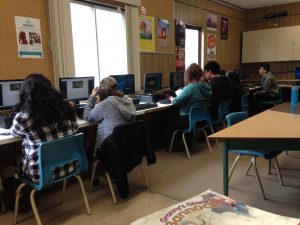 One of my goals during this CFE is to examine the relationship between technology and learning in rural school districts. Put in other words, what is the impact of employing a variety of technologies in a rural learning environment? I found this question to be essential in understanding how teachers are to provide their students with the tools they will need to develop necessary 21st century skills. I found this issue to be especially relevant to teachers working with First Nations communities, many of which are rural. Technology, in all its forms, has the potential to empower teachers to teach new modes of literacy to their students, making it easier to reach out to vulnerable populations. To draw on a specific example from my CFE, I found that my “Over the top!” online activity worked exceptionally well in engaging our senior students in historical perspective taking. The activity has students assume the role of a WWI infantry soldier in a choose-your-own-adventure game. It was this approach of learning through play, as well as the prospect of doing an activity outside of class, that peaked their interest. In addition to their play-through, students were expected to fill out critical question sheets that had them reflecting on their experience of the game through drawings, significant vocabulary, question posing, and a written summary. Overall, the activity was a success and the humanities teacher thanked me for my contribution to the class.
One of my goals during this CFE is to examine the relationship between technology and learning in rural school districts. Put in other words, what is the impact of employing a variety of technologies in a rural learning environment? I found this question to be essential in understanding how teachers are to provide their students with the tools they will need to develop necessary 21st century skills. I found this issue to be especially relevant to teachers working with First Nations communities, many of which are rural. Technology, in all its forms, has the potential to empower teachers to teach new modes of literacy to their students, making it easier to reach out to vulnerable populations. To draw on a specific example from my CFE, I found that my “Over the top!” online activity worked exceptionally well in engaging our senior students in historical perspective taking. The activity has students assume the role of a WWI infantry soldier in a choose-your-own-adventure game. It was this approach of learning through play, as well as the prospect of doing an activity outside of class, that peaked their interest. In addition to their play-through, students were expected to fill out critical question sheets that had them reflecting on their experience of the game through drawings, significant vocabulary, question posing, and a written summary. Overall, the activity was a success and the humanities teacher thanked me for my contribution to the class.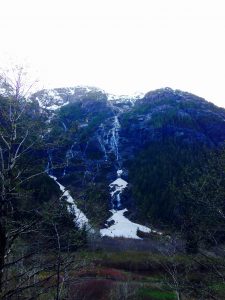 The major event of this week was a parent-teacher meeting on student misbehaviour amongst the junior and senior secondary cohorts. One of the concerns raised during the meeting, was the issue of teacher retention. It was clearly visible that parents were concerned regarding this matter and that the district’s inability to convince teachers to stay was detrimental to K.E.S.S.’s ability to strengthen the relationship between the school community and the village. Other issues raised during the meeting were responsible use of technology in class, student attendance, and the creation of a PAC. Parents also acknowledged that a lot of the behavioural issues arise in the home and need to be addressed at their source. At certain points the meeting became emotional with parents pleading for the protection of the future of those students who were serious about their learning. They felt the current system favoured managing those students who did not wish to learn in class and neglecting those who wanted to learn. In the end, the outcome of the meeting was both positive and productive. A new, clear protocol of dealing with misbehaviour was established: the teacher would count down from 5 to 0, prompting students on both their positive and negative behaviours (ex. “I am looking for good listening skills”). Those students reluctant to comply with teacher direction would have their name recorded on the board, which could at a later point be removed for correct behaviour. If the misbehaviour gets worse, then the student will be informed that they are to serve a detention. If this detention is ignored, then the student would be suspended until they return to the school with a parent, who would then sit down with the teacher and principal to discuss a reason and solution to the misbehaviour. Most interesting to me, was the suggestion that the young adult men of the village should visit the school and act as volunteers to model good citizenship to the junior and senior students (in all cases of misbehaviour, boys were the actors). A great many ideas were discussed at this meeting and it was a most inspiring and emotional experience.
The major event of this week was a parent-teacher meeting on student misbehaviour amongst the junior and senior secondary cohorts. One of the concerns raised during the meeting, was the issue of teacher retention. It was clearly visible that parents were concerned regarding this matter and that the district’s inability to convince teachers to stay was detrimental to K.E.S.S.’s ability to strengthen the relationship between the school community and the village. Other issues raised during the meeting were responsible use of technology in class, student attendance, and the creation of a PAC. Parents also acknowledged that a lot of the behavioural issues arise in the home and need to be addressed at their source. At certain points the meeting became emotional with parents pleading for the protection of the future of those students who were serious about their learning. They felt the current system favoured managing those students who did not wish to learn in class and neglecting those who wanted to learn. In the end, the outcome of the meeting was both positive and productive. A new, clear protocol of dealing with misbehaviour was established: the teacher would count down from 5 to 0, prompting students on both their positive and negative behaviours (ex. “I am looking for good listening skills”). Those students reluctant to comply with teacher direction would have their name recorded on the board, which could at a later point be removed for correct behaviour. If the misbehaviour gets worse, then the student will be informed that they are to serve a detention. If this detention is ignored, then the student would be suspended until they return to the school with a parent, who would then sit down with the teacher and principal to discuss a reason and solution to the misbehaviour. Most interesting to me, was the suggestion that the young adult men of the village should visit the school and act as volunteers to model good citizenship to the junior and senior students (in all cases of misbehaviour, boys were the actors). A great many ideas were discussed at this meeting and it was a most inspiring and emotional experience.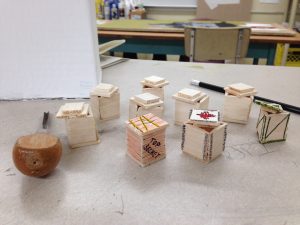
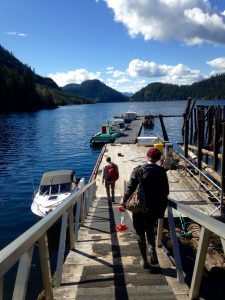 at 7:45am on Monday. Our first stop was in the same city, where we picked up a mother from the village who was also headed for Kyuquot. “Because our community is so small” the school principal explained, “it is important that we help each other out. It also helps the reputation of the school that we actively engage with the community of Kyuquot itself, so I often find myself helping others get to where they need to go.” Kyuquot is a First Nations village belonging to the Kyuquot and Cheklesahht peoples, who are part of the Nuu Chah Nulth nations of the Northwest Pacific. To get the village, travellers must reach Vancouver Island either through Nanaimo or Victoria. From there, they must drive for hours to reach Campbell River, before taking the highway to Woss. For the final stretch of the journey to Kyuquot, travellers brave four hours of driving down busy logging roads from Woss, to Zeballos, and finally to Fair Harbour, where they must then arrange for a private water taxi to ferry them to Kyuquot. Alternatively, travellers can take a shipping vessel that travels from Gold River to Kyuquot once a week – about a four hour ride on the Uchuck. The point to be made is that Kyuquot is remote and not easily accessed.
at 7:45am on Monday. Our first stop was in the same city, where we picked up a mother from the village who was also headed for Kyuquot. “Because our community is so small” the school principal explained, “it is important that we help each other out. It also helps the reputation of the school that we actively engage with the community of Kyuquot itself, so I often find myself helping others get to where they need to go.” Kyuquot is a First Nations village belonging to the Kyuquot and Cheklesahht peoples, who are part of the Nuu Chah Nulth nations of the Northwest Pacific. To get the village, travellers must reach Vancouver Island either through Nanaimo or Victoria. From there, they must drive for hours to reach Campbell River, before taking the highway to Woss. For the final stretch of the journey to Kyuquot, travellers brave four hours of driving down busy logging roads from Woss, to Zeballos, and finally to Fair Harbour, where they must then arrange for a private water taxi to ferry them to Kyuquot. Alternatively, travellers can take a shipping vessel that travels from Gold River to Kyuquot once a week – about a four hour ride on the Uchuck. The point to be made is that Kyuquot is remote and not easily accessed.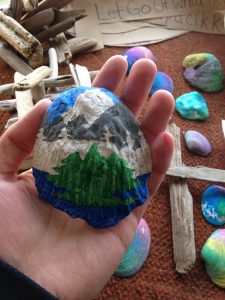
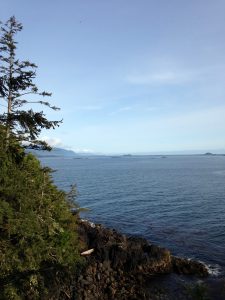
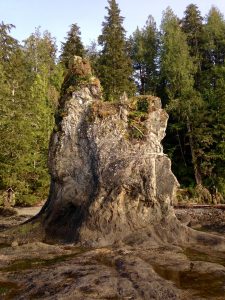 On Friday, the students spent the day crafting gifts for the potlatch to be held at Bella Bella next week. I painted a shell, while others made driftwood mobiles, necklaces, bracelets, tie-dyed shells, and even cedar baskets. After school, all of the teachers went together to Walter’s Cove to go drop off our garbage at the bins situated there and go for a hike. We spent all afternoon being in each other’s company in the forest and I must say it felt rejuvenating. To wrap up the day and indeed the week, one of the students took us teachers to the tip of Walter’s Cove to see Thlaathluktiinlth (“Two Hundred Mouths”). According to Nuu Chah Nulth Kyuquot/Checleseht oral tradition, Thlaathluktiinlth is the being responsible for the creation of their traditional territories and their chiefly families. Writing at the end of my first week at Kyuquot, I truly feel more closely connected to this place where learning happens. One point of interest I intend to explore in my remaining two weeks is exploring how learning – in its entirety – happens in this isolated, serene corner of our world.
On Friday, the students spent the day crafting gifts for the potlatch to be held at Bella Bella next week. I painted a shell, while others made driftwood mobiles, necklaces, bracelets, tie-dyed shells, and even cedar baskets. After school, all of the teachers went together to Walter’s Cove to go drop off our garbage at the bins situated there and go for a hike. We spent all afternoon being in each other’s company in the forest and I must say it felt rejuvenating. To wrap up the day and indeed the week, one of the students took us teachers to the tip of Walter’s Cove to see Thlaathluktiinlth (“Two Hundred Mouths”). According to Nuu Chah Nulth Kyuquot/Checleseht oral tradition, Thlaathluktiinlth is the being responsible for the creation of their traditional territories and their chiefly families. Writing at the end of my first week at Kyuquot, I truly feel more closely connected to this place where learning happens. One point of interest I intend to explore in my remaining two weeks is exploring how learning – in its entirety – happens in this isolated, serene corner of our world.